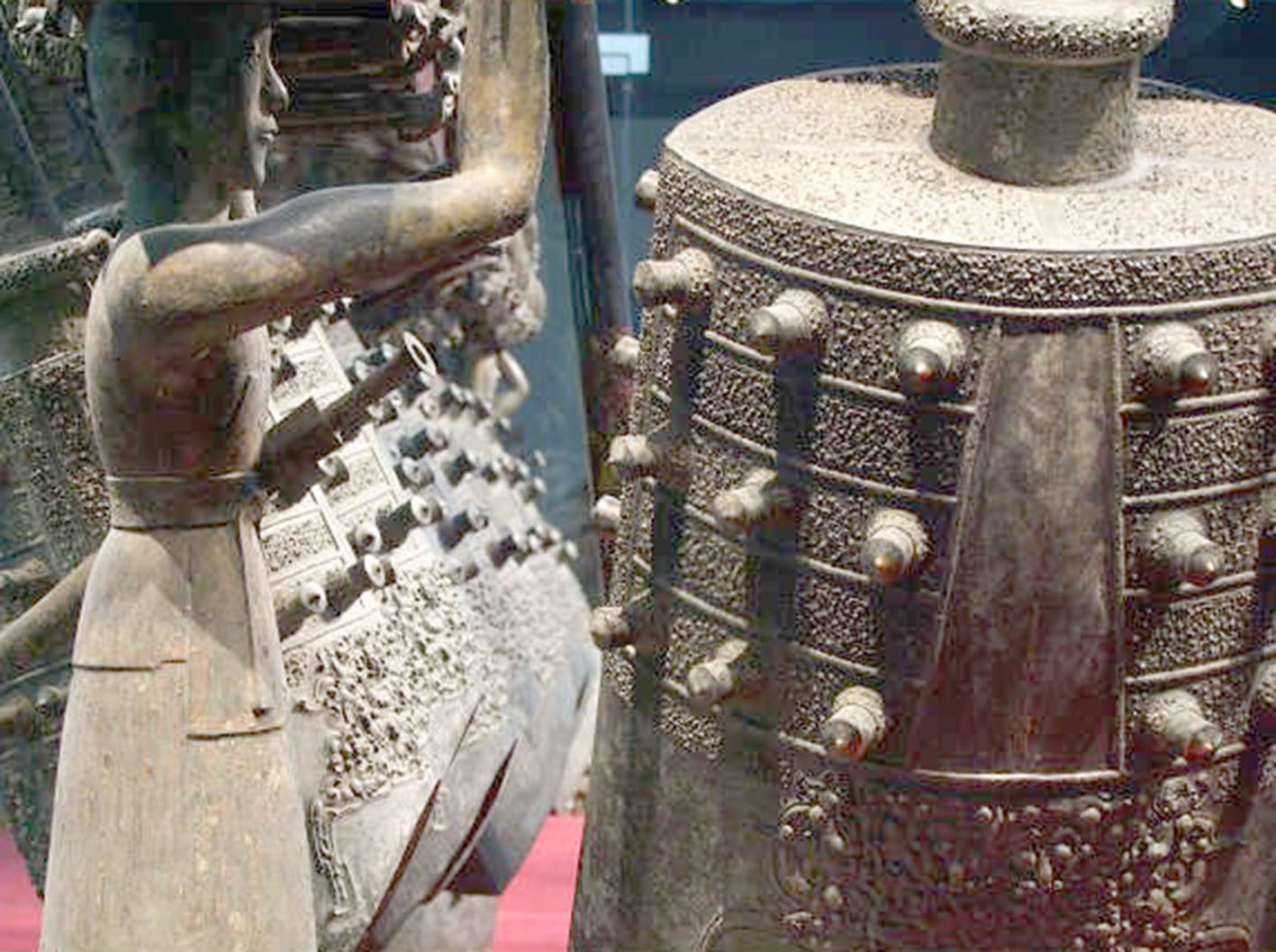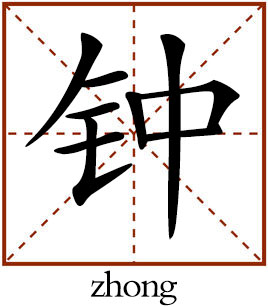Bianzhong helped shape music archaeology

The details of the Zenghouyi Chime Bells

The Chinese character “zhong” originally refers to the musical instrument “bell.” It also refers to clocks as zhong were used to announce the hour later.
The excavation of the Zenghouyi Chime Bells, also known as Bianzhong of Marquis Yi of Zeng, attracted broad attention from the worlds of music and archaeology. Yehudi Menuhin, an American-born violinist, once exclaimed that instruments of the ancient Greeks were all made from bamboo and wood and couldn’t be preserved until today, and that only in China can people listen to music played by instruments created more than two thousand years ago.
The development of music archaeology in China also can be traced to the discovery of the Zenghouyi Chime Bells. The reporter talked with Fang Jianjun, vice-president of the Tianjin Conservatory of Music and gained insights into this remarkable music heritage.
Fang said the discipline emerged when more and more musicians realized the value and irreplaceable role of ancient materials for studying music history.
Historian of music Li Chunyi was among the earliest scholars to research this area. In the 1950s and 1960s, he incorporated excavated musical instruments into his research on music history. He also collected a large amount of written materials and archaeological findings to verify his research results.
In 1977, another historian of music Huang Xiangpeng went to several provinces in the Yellow River basin to research excavated musical instruments. Huang wrote about the mystery behind the two-tone effect produced by bianzhong of the pre-Qin period, the patterns of melody arrangements of bianzhong in the Western Zhou Dynasty, and other basic laws of ancient instruments. Unfortunately, Huang’s writings were not brought to widespread attention.
In 1978, the Zenghouyi Chime Bells were unearthed and provided a complete ceremonial set of 65 bronze bells capable of producing 130 sounds. Also, on each bell there were inscriptions of the music scales and temperaments it could play. All these can verify the existence of zhong chimes that each bell could play two tones during the pre-Qin period, which was proposed in Huang’s writing.
Fang gave several reasons why the Zenghouyi Chime Bells gained so much more attention than previous discoveries of music archaeology. First of all, the tomb was better preserved than other tombs containing music materials. Its scale and quantity of instruments were also unprecedented. In the tomb, 125 instruments were excavated including strings, woodwinds, and percussion instruments.
Furthermore, the instruments in the tomb were all of high quality.The tonal range of the chime bells is from C2 to D7. In the middle area of the tonal range, it can play all twelve half tones. It is the earliest instrument in the world that could play all twelve semitones.
Moreover, there are inscriptions about music on each bell, attachments, and frame. These written materials were all valuable documents. People used to think that the heptachord was introduced to China from abroad. The inscriptions, however, show that this musical scale already existed as early as 2,000 years ago and the instruments excavated can play the heptachord as well.
In addition, the Zenghouyi Chime Bells provided a new pattern of melodies, which is called “composite melodies.” It was an innovation by people in the State of Zeng based on traditional study of musical temperament. Inscriptions on the Chime Bells recorded the correspondence of the musical temperament and scales of the state with other states at that time, for instance, the states of Zhou, Chu, and Shen. These are rare music documents from the pre-Qin period.
